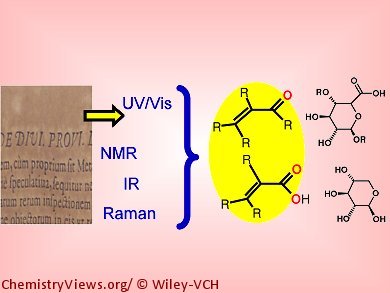The preservation of paper is important owing to its wide use over many centuries to record human knowledge. Insight into the degradation reactions of paper is essential in designing efficient conservation treatments.
Alfonso Zoleo and his colleagues, University of Padova, Italy, have developed a procedure for investigation of the products of natural paper degradation. It is based on the analysis of the water extracts obtained from washing procedures used in restoration of very degraded dark leaves of a 16th-century-printed book, the Divina Providentia.
The conservation treatment of ancient books frequently involves washing the paper to remove acidic products. If such products are collected, it is possible to obtain some information about the history of the preservation of the book itself, as well as general information about degradation reactions and products occurring in naturally aged library and archival materials.
Zoleo and his team have shown that although this analysis is only selective for the water-soluble degradation products, the combined use of NMR, IR, Raman, UV/VIS, EPR and X-ray fluorescence spectroscopy and inductively coupled plasma and HPLC analyses allows many functional groups to be recognized. These indicate the occurrence of defined hydrolytic and oxidative reactions during the natural aging of cellulose. The chromophores responsible for browning are conjugated carbonyl and carboxyl compounds.
The team says this new method is very convenient to obtain precious and normally unavailable information on the cellulose degradation by-products from naturally aged paper.
- Degradation Products from Naturally Aged Paper Leaves of a 16th-Century-Printed Book: A Spectrochemical Study,
M. Bronzato, P. Calvini, C. Federici, S. Bogialli, G. Favaro, M. Meneghetti, M. Mba, M. Brustolon, A. Zoleo,
Chem. Eur. J. 2013.
DOI: 10.1002/chem.201300756

